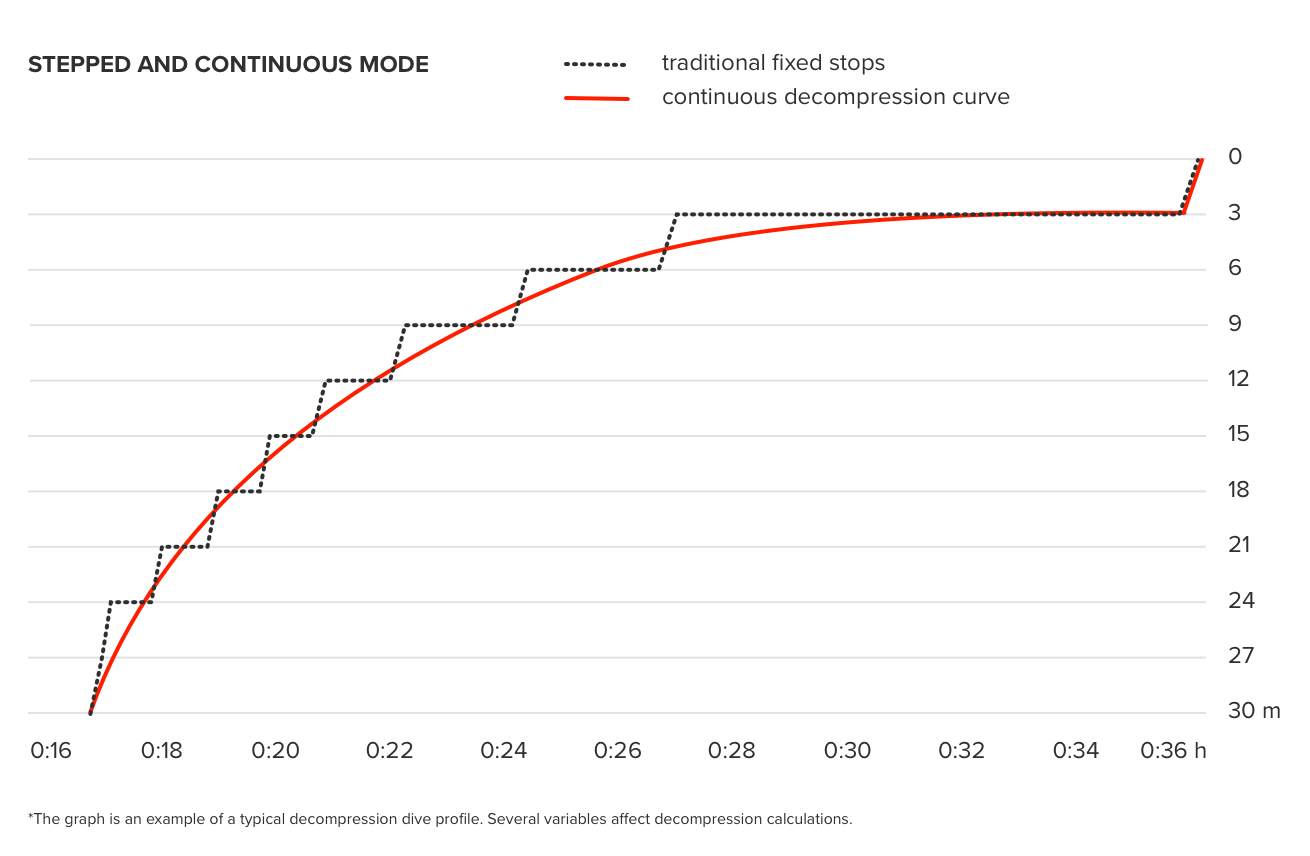Suunto EON Core User Guide 4.0
Deco profile
Deco profile can be selected in Dive settings » Parameters » Deco profile.
Continuous decompression profile
Traditionally, since Haldane’s 1908 tables, decompression stops have always been deployed in fixed steps such as 15 m, 12 m, 9 m, 6 m and 3 m. This practical method was introduced before the advent of dive computers. However, when ascending, a diver actually decompresses in a series of more gradual ministeps, effectively creating a smooth decompression curve.
The advent of microprocessors has allowed Suunto to more accurately model the actual decompression behavior. A continuous decompression curve is included in the Suunto Fused™ RGBM 2's working assumption.
During any ascent involving decompression stops, Suunto dive computers calculate the point at which the control compartment crosses the ambient pressure line (that is the point at which the tissue’s pressure is greater than the ambient pressure), and off-gassing starts. This is referred to as the decompression floor. Above this floor depth and below the ceiling depth is the decompression window. The range of the decompression window is dependent on the dive profile.
Off-gassing in the leading fast tissues will be slow at or near the floor because the outward gradient is small. Slower tissues may be still on-gassing and given enough time, the decompression obligation may increase, in which case the ceiling may move down and the floor may move up.
Suunto RGBMs optimize these two contradictory issues through a combination of a slow ascent rate and continuous decompression curve. It all comes down to proper control of the expanding gas during an ascent. This is why all Suunto RGBMs use a maximum ascent rate at 10 m/minute, which has proven over the years to be an effective protective measure.
The decompression floor represents the point at which the Suunto RGBM is seeking to maximize bubble compression, while the decompression ceiling is maximizing off-gassing.
The added advantage of having a decompression ceiling and floor is that it recognizes that in rough water, it might be difficult to maintain the exact depth to optimize decompression. By maintaining a depth below the ceiling but above the floor, the diver is still decompressing, although slower than optimal, and provides an additional buffer to minimize the risk that waves will lift the diver above the ceiling. Also, the continuous decompression curve used by Suunto provides a much smoother and a more natural decompression profile than the traditional “step” decompression.
Suunto EON Core has a feature of displaying the decompression ceiling. The optimal decompression occurs in the decompression window, which is displayed by both upward and downward arrows. If the ceiling depth is violated, a downward pointing arrow and an audible alarm will prompt the diver to descend back to the decompression window.
Stepped decompression profile
In this decompression profile the ascent has divided into traditional 3 m (10 ft) steps or stages. In this model diver will decompress at traditional fixed depths.

Decompression profile selection is available starting from firmware version 2.0.